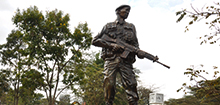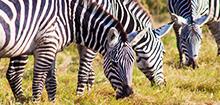The Kenya Wildlife Service undertakes and coordinates biodiversity research and monitoring through its Biodiversity Research & Monitoring Division. This Division provides scientific information that is used in the conservation and management of Kenya's invaluable biodiversity.

In addition, this Division formulates policies and plans used for sustainable management of wildlife and their habitats. The Division has several objectives that include the following:
- Improve the conservation status of Kenya’s biodiversity and protected areas (National Parks, National Reserves and Sanctuaries) through application of appropriate scientific principles;
- Oversee the development of biodiversity research and monitoring policies and guidelines, including review and approval of biodiversity research concepts that conform to nationally and internationally accepted paradigms and protocols;
- Conduct and supervise targeted research and monitoring activities and programmes that support and promote conservation of biodiversity in Kenya;
- Provide scientific information, findings and technical advice on Kenya’s biodiversity status, trends and threats to support management programmes;
- Promote scientific knowledge and public appreciation of Kenya’s wildlife, their population, distribution and conservation needs;
- Develop and maintain a multi-purpose library and biodiversity information systems that provide scientific information for conservation and management of Kenya’s biodiversity;
- Improve the overall national capacity to conduct and supervise biodiversity research and monitoring;
- Strengthen collaboration with relevant research institutions and partners nationally and internationally including development of memoranda of understanding for enhanced biodiversity research and monitoring;
- Contribute towards development, promotion, domestication and implementation of environmental and conservation policies in Kenya including international conventions, treaties and strategies especially those dealing with environmental issues;
- Mobilize and secure resources through proposal development to support new and existing biodiversity research and monitoring programmes;






